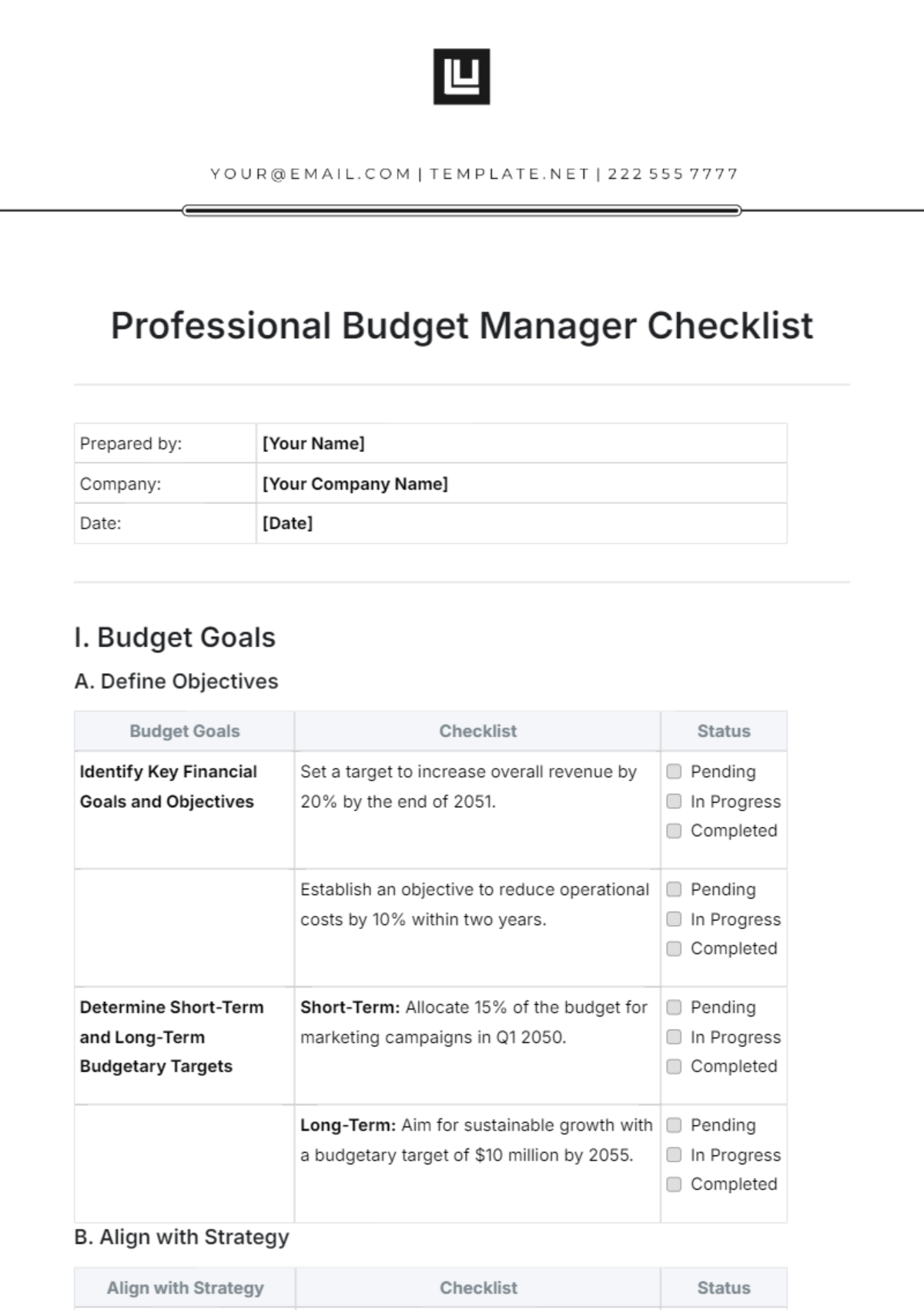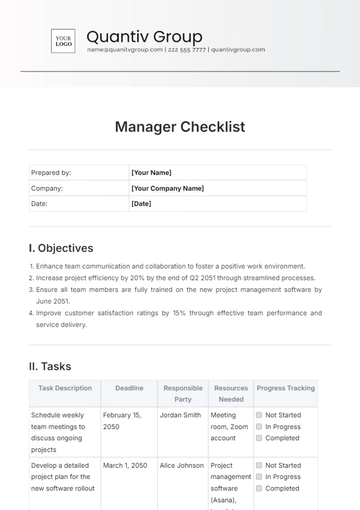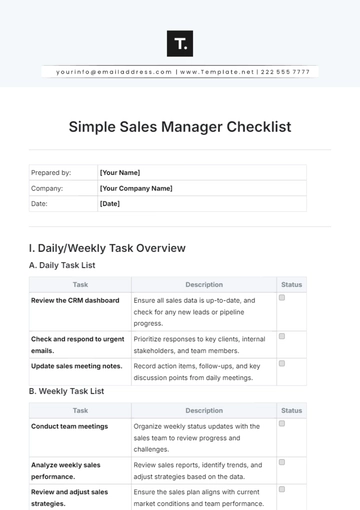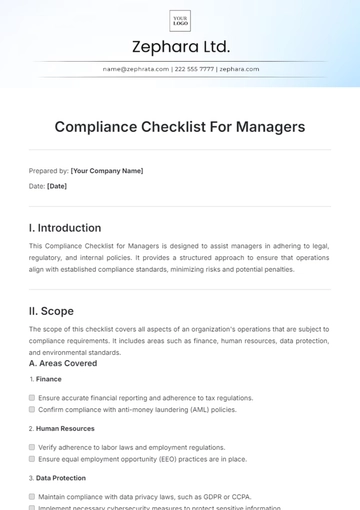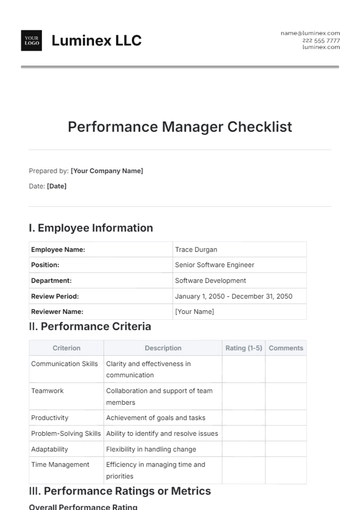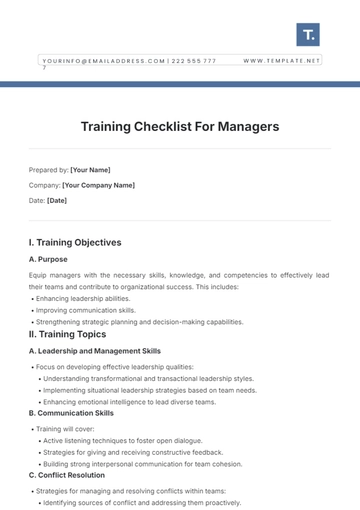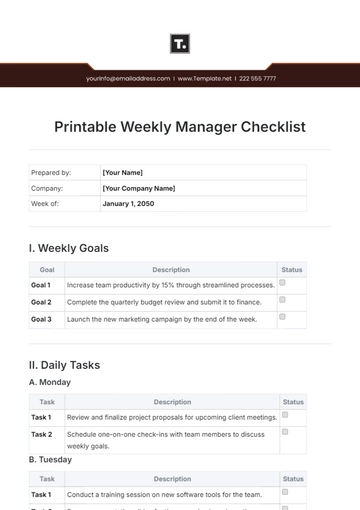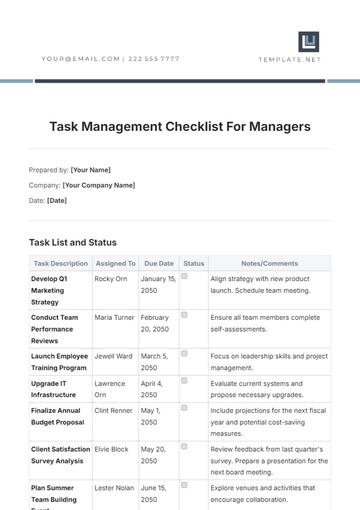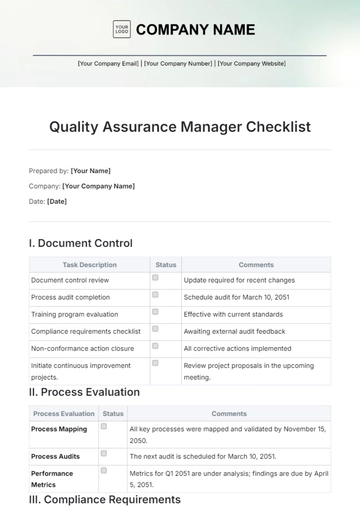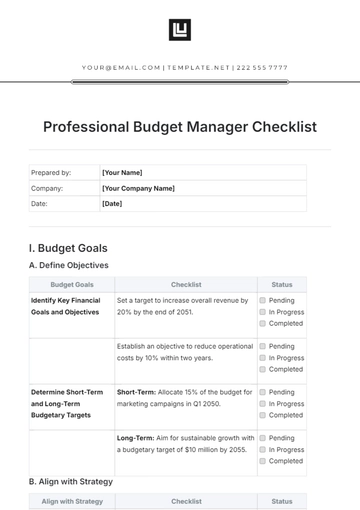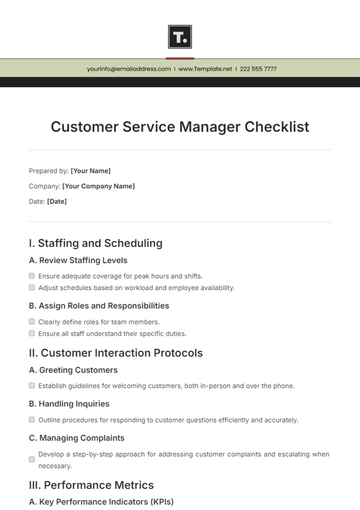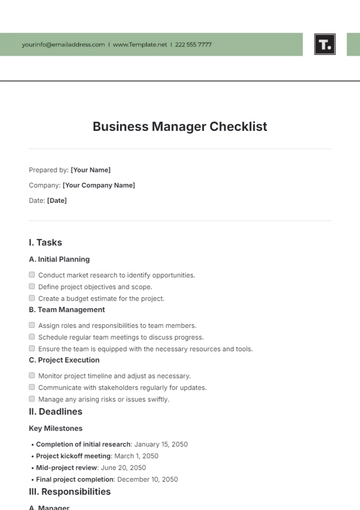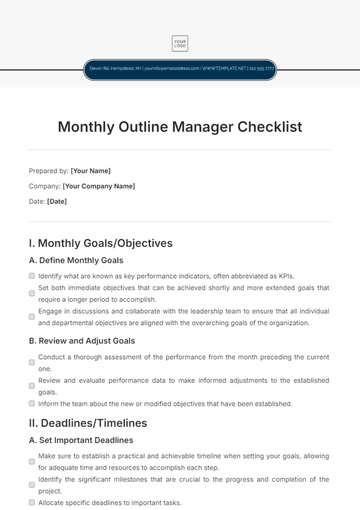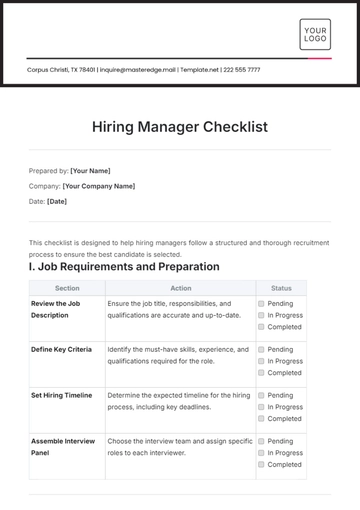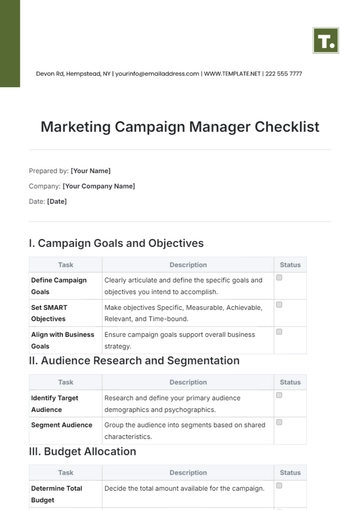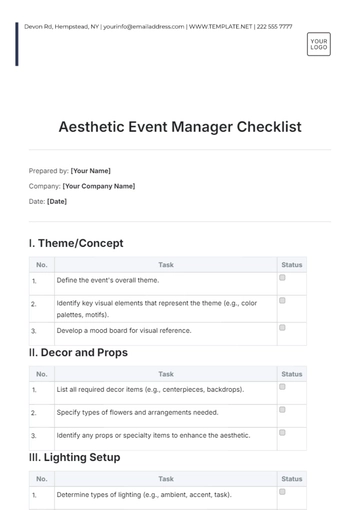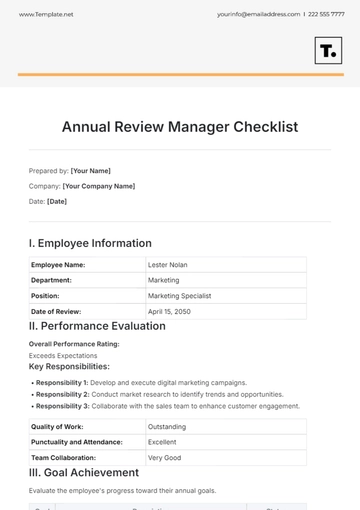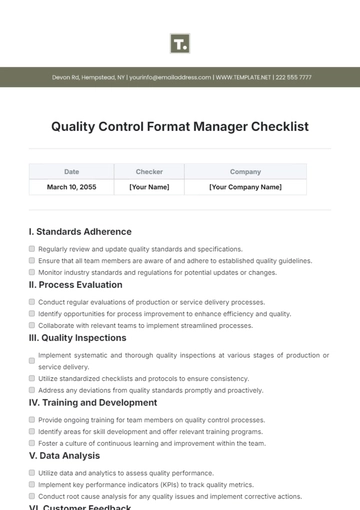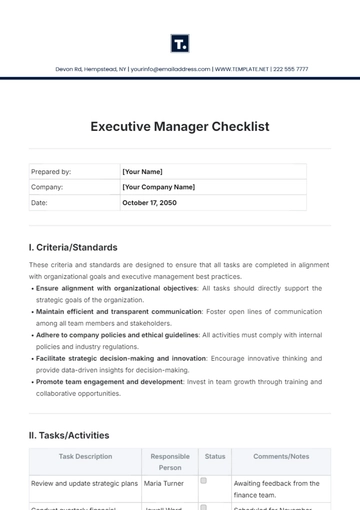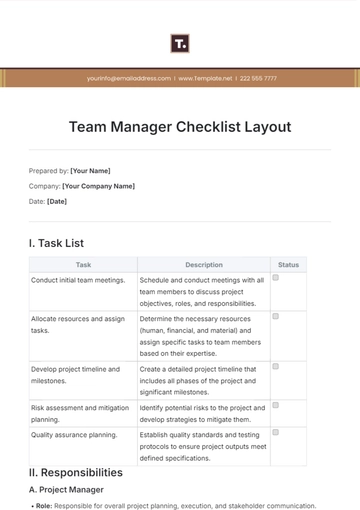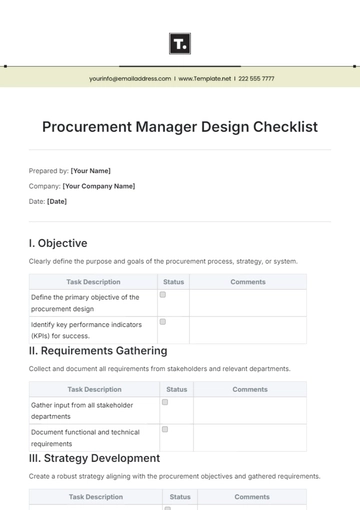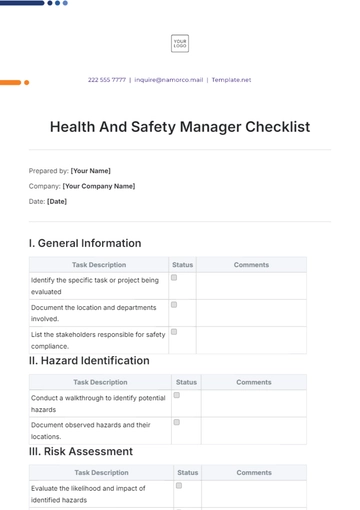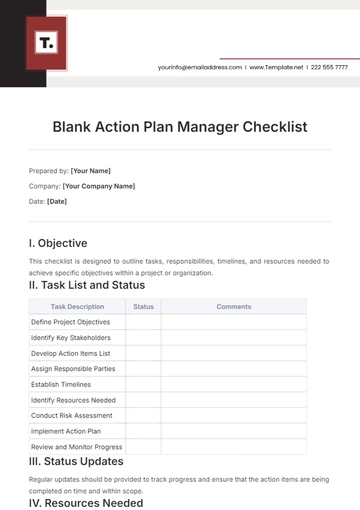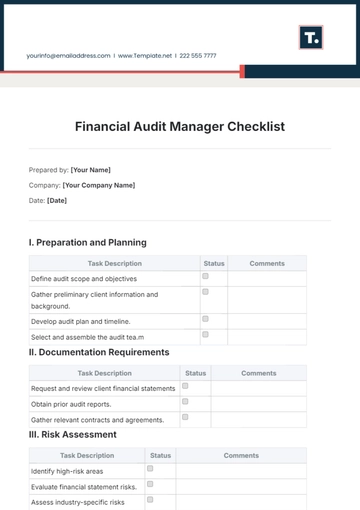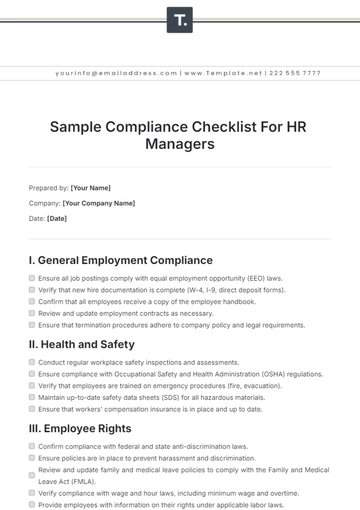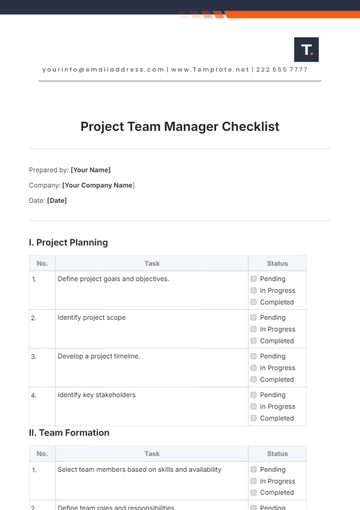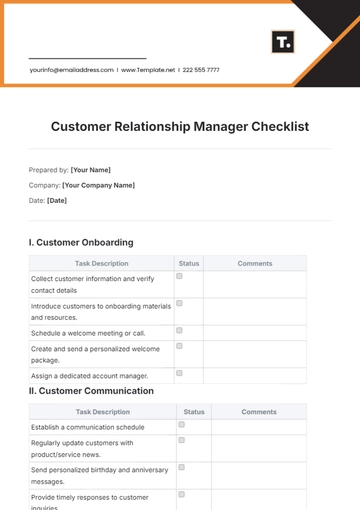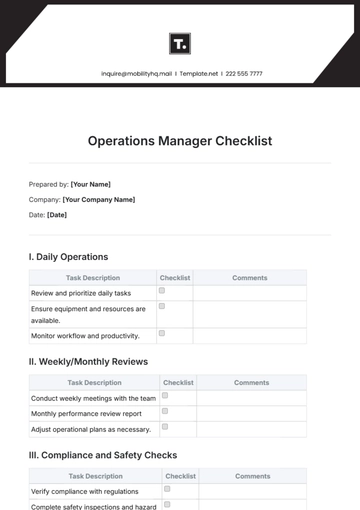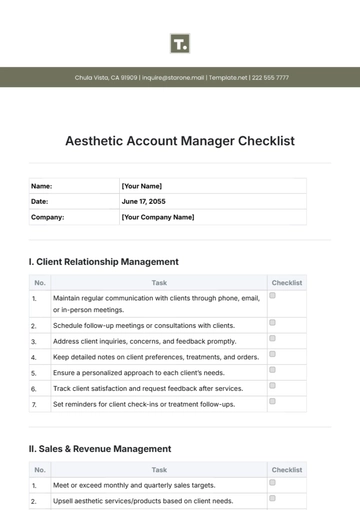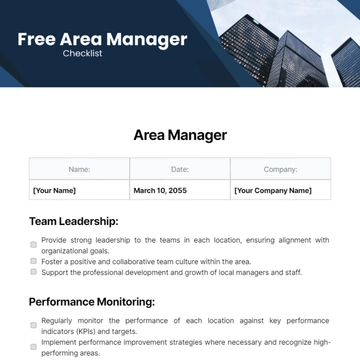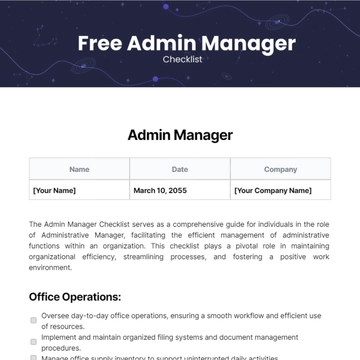Professional Budget Manager Checklist
Prepared by: | [Your Name] |
Company: | [Your Company Name] |
Date: | [Date] |
I. Budget Goals
A. Define Objectives
Budget Goals | Checklist | Status |
|---|
Identify Key Financial Goals and Objectives | Set a target to increase overall revenue by 20% by the end of 2051. | |
| Establish an objective to reduce operational costs by 10% within two years. | |
Determine Short-Term and Long-Term Budgetary Targets | Short-Term: Allocate 15% of the budget for marketing campaigns in Q1 2050. | |
| Long-Term: Aim for sustainable growth with a budgetary target of $10 million by 2055. | |
B. Align with Strategy
Align with Strategy | Checklist | Status |
|---|
Ensure Alignment with the Overall Organizational Strategy | Align budget goals with the strategic plan to boost innovation and digital transformation. | |
Obtain Stakeholders' Input on Budget Priorities | Hold stakeholder meetings by February 2050 to align budget priorities. | |
II. Data Collection
A. Gather Historical Data
Gather Historical Data | Checklist | Status |
|---|
Collect Previous Budgets and Financial Statements | Retrieve and review budgets and financial statements from 2050 to 2054 for comprehensive insights. | |
Analyze Past Expenditure Patterns and Revenue Trends | Identify seasonal trends and fluctuations in expenditures over the past five years to inform future budgeting. | |
B. Collect Market Information
Collect Market Information | Checklist | Status |
|---|
Research Market Trends and Economic Forecasts | Analyze the impact of projected economic growth of 3% annually and its effect on revenue generation. | |
Identify Cost Factors and Inflation Rates | Monitor inflation rates expected to rise by 2.5% in 2050 and adjust budget allocations accordingly. | |
III. Budget Drafting
A. Create an Initial Draft
Crean an Initial Draft | Checklist | Status |
|---|
Develop a Preliminary Budget Structure Based on Collected Data | Formulate a draft budget that highlights key income sources and anticipated expenditures for the fiscal year 2050. | |
Classify Income and Expense Categories | Categorize income streams into operational revenue, investments, and grants; expenses into fixed costs, variable costs, and project-specific costs. | |
B. Prepare a Detailed Proposal
Prepare a Detailed Proposal | Checklist | Status |
|---|
Allocate Resources to Departments and Projects | Allocate $1.5 million to the R&D department to foster innovation and technological advancements. | |
Include Detailed Justifications for Each Budget Item | Provide a rationale for budget allocations, focusing on ROI and alignment with strategic objectives. | |
IV. Review Process
A. Conduct Internal Review
Conduct Internal Review | Checklist | Status |
|---|
Share the Draft with Internal Departments for Feedback | Distribute the budget draft by March 1, 2050, and request feedback by March 15, 2050. | |
Revise the Budget as per Internal Reviews and Suggestions | Incorporate feedback and finalize the draft by March 30, 2050. | |
B. Approval
Approval | Checklist | Status |
|---|
Present the Revised Budget to Management for Approval | Schedule a presentation with the executive team on April 5, 2050. | |
Make Final Adjustments as Required by the Leadership Team | Adjust allocations based on leadership feedback and resubmit for final approval by April 10, 2050. | |
V. Monitoring Procedures
A. Implement Tracking System
Implement Tracking System | Checklist | Status |
|---|
Set Up Systems to Track Actual Expenditures Against Budget | Implement an integrated financial software system to monitor expenses in real-time, targeted for completion by May 2055. | |
Monitor Income Streams and Variance Reports | Prepare monthly variance reports to analyze discrepancies between budgeted and actual figures. | |
B. Regular Reporting
Regular Reporting | Checklist | Status |
|---|
Establish Regular Reporting Schedules to Update Stakeholders | Develop a quarterly reporting schedule to keep stakeholders informed of budget performance. | |
Prepare Detailed Financial Reports for Review | Compile comprehensive financial reports to be presented at quarterly management meetings. | |
VI. Adjustment Protocols
A. Identify Issues
Identify Issues | Checklist | Status |
|---|
Monitor for Emerging Issues or Discrepancies | Conduct monthly reviews to spot any financial irregularities or unexpected expenses. | |
Determine Causes of Financial Variances | Analyze data to understand variances and their implications for the overall budget. | |
B. Implement Adjustments
Implement Adjustments | Checklist | Status |
|---|
Propose Budget Adjustments to Reflect New Circumstances | Suggest reallocations of funds in response to unforeseen expenses or changes in revenue streams. | |
Communicate Changes to All Relevant Parties | Inform all stakeholders of any adjustments made to the budget and the rationale behind these changes. | |
Task List and Status
Task Description | Status | Comments |
|---|
Define Budget Goals | | Objectives have been identified; alignment is pending. |
Gather Historical Financial Data | | Last five years of data collected. |
Draft Initial Budget | | Awaiting completion of data collection. |
Conduct Internal Review | | Scheduled for next month. |
Implement Tracking System | | System setup is underway, and 50% complete. |
Regular Financial Reporting | | Reports are to be scheduled post-budget approval. |
Checklist Templates @ Template.net
